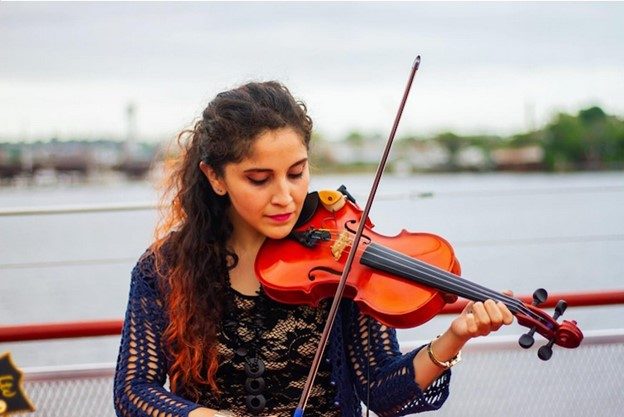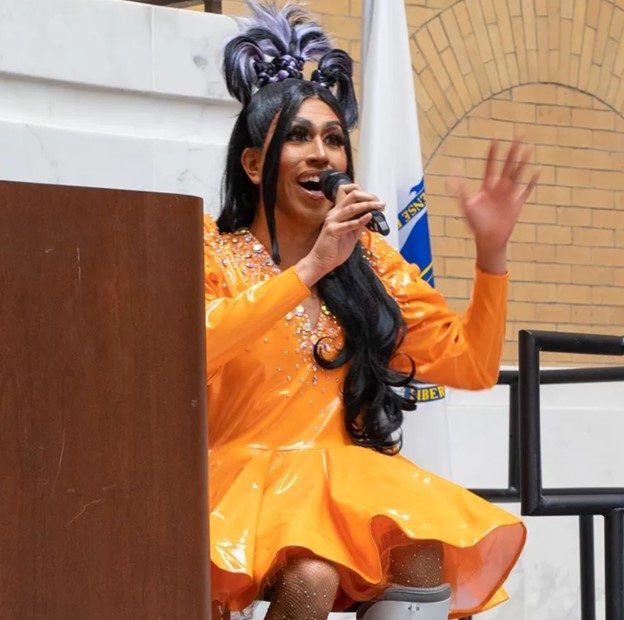Dan Blask, Program Manager
Four Years of Pandemic Funding for Individuals in the Cultural Sector

I was surprised by how emotional I got during my colleague’s PowerPoint presentation.
It was June 2024, during a committee meeting of Mass Cultural Council’s Governing Council. As a slide presentation scrolled by on Zoom, our staff gave Council members an overview of the Agency’s recent grant-making. The feeling hit as we reached slide 16, a grid of every program and dollar spent on recovery from the COVID-19 pandemic.
It was a lot! Since the onset of the pandemic in March 2020, Mass Cultural Council distributed 7,107 grants across almost a dozen pandemic relief/recovery programs, totaling $74,270,000. Almost $22 million of that – just under 30 percent – went to Massachusetts individual artists and cultural workers, 5,177 of them in all.
Through my role managing our artist programs, I got to work on those grant processes. And looking over the columns of numbers and the hard-to-believe totals they added up to, it felt meaningful, moving even. It was the kind of feeling Kurt Vonnegut must’ve been talking about when he said, “If this isn’t nice, I don’t know what is.”
It was nice, in part, because it marked the conclusion of four years of work. In May 2024, our Agency announced 138 additional $5,000 grants from the Cultural Sector Recovery for Individuals program. The program was meant to support artists and cultural workers and help chart a path for growth out of the COVID-19 pandemic. The May awards were the last of our unspent dollars from a historic appropriation from the state legislature. They also reflected the final grants in our pandemic recovery efforts.
We know COVID-19 has been uniquely challenging to arts and culture. The very nature of the creative economy, which spans gig musicians to craft fair vendors to media arts technicians to nightclub drag artists, made it susceptible to pandemic cancellations and closures. This is only a snapshot, but in April 2022, we shared survey findings reflecting that Massachusetts creative individuals reported 74,152 lost or cancelled gigs/jobs and almost $32 million in lost personal income.
So the initial impacts were widespread and often devastating. What effect did our recovery grants have? We asked for final reports from the grants’ recipients, and while the lasting impact of funding isn’t always visible right away, the reports hint at some conclusions.
The first is that the cost of housing and creative space was and continues to be a formidable challenge for the cultural sector. Before throwing a global health emergency into the mix, Massachusetts already had some of the highest housing expenses in the country. So perhaps it shouldn’t come as a surprise that the largest percentage of individuals (54%) reported using their grants to support “Living, Workplace, or Housing Costs”.
This included down payments, mortgages, and rent (so much rent!). Multiple grant recipients stated that the grant helped keep them in their homes. Some also reported making upgrades that otherwise wouldn’t have been possible, like repairing the roof; putting in new insulation and wiring; building accessible workspace; installing energy efficient windows; transitioning to a heat pump system; and updating new ventilation for a live/work studio.
The second highest reported use of the funds was, unsurprisingly, “Supplies”, at 52%. Grant recipients reported using at least some of their funds to purchase the building blocks of their creative practices: clay, paint, dyes, inks, props, wigs, costumes, makeup, leather for shoe-making, rods for glass-blowing, frames, mattes, instrument strings, and printing and packaging supplies.
Almost half of the grant recipients (47%) used grant funds for “Technology or Equipment Upgrade(s)”. Based on feedback from the sector, the Agency decided to make the grants unrestricted, meaning recipients could use them however they chose. That said, this is definitely the type of thing we had in mind when devising the grant: a chance for artists to make capital investments to advance their careers, things like: a clay slab roller; Gibson Hummingbird guitar; acoustic laoutar (a hybrid madocello/laouto); busking speaker; embroidery machine; dye sublimation printer; film and print scanner; violin bow; recording audio interface and microphone; domain names/hosting web sites; and many more. (It turns out creative people make interesting investments.)
The nature of the creative sector paired with pandemic closures and cancellations caused many individual practitioners to fall behind financially. 46% of our grant recipients used part of their funds for “Savings/Debt Repayment”.
But the reports included plenty of signs of hope, too, indications of careers and creative practices back in motion. 25% used grant funds for “Travel/Tour Costs”, helping make sure Massachusetts artists were represented at creative destinations like the New Orleans Film Festival, the Guadalajara Book Fair, and New York Fashion Week.
What’s more, 36% reported that the grants supported “Professional Development”. These includes in-state opportunities like the Juniper Summer Writing Institute, Snowfarm Craft Program, and Jacob’s Pillow Curriculum in Motion Institute, as well as trainings further afield, like a Master glassblowing class in Germany or a Butoh workshop in Japan.
Believing that all ships rise together in the cultural community, we were thrilled to see that 18% of grant recipients used their funds for “Hiring Other Artists”. This suggests the funds supported not just the grantees but also their collaborators: composers/sound designers/mastering engineers; videographers; editors; photographers; animators; archivists/research assistants; fabricators; comic artists; and many actors, dancers, musicians, and other performing artists.
Finally, anyone who has practiced an art form has experienced the way creativity is intertwined with health and well-being. “Healthcare Costs” made up 11% of the reported uses, everything from dental surgery to accessibility investments to paying off old medical bills.

What else did the final reports reveal? If the pandemic was the major cultural sector disruption in the early 2020s, it wasn’t the only one. Union strikes by the Screen Actors Guild (SAG-AFTRA) and Writers Guild of America (WGA) meant TV and film, a major Massachusetts industry, slowed to a standstill. Beyond that, the reports contained many personal stories of loss, illness, unstable housing, and other struggles.
To what extent did the Cultural Sector Recovery grants solve all these things? Can we claim victory for having fixed finances, housing, and healthcare for creative people in Massachusetts? (To quote Vonnegut again, that “Everything was beautiful and nothing hurt?”)
Obviously, we hope our funding helped, but the real lesson you can find in those final grant reports, with their stats and character-limited text responses, is something true about creative people.
I wrote earlier that creative fields were uniquely susceptible to pandemic disruptions. But the reports suggest another dimension to it, and that’s that creativity is restorative. Time and again, the reports revealed artists envisioning ways to realize their own recovery: a film artist attending leadership training for Women in Animation; a music artist traveling to pitch a debut album to a German record label; an artist and writer with disabilities purchasing assistive devices so that projects formerly missed were now within reach.
What’s been most gratifying is not so much any grant or its impact, but the resilience and vision of Massachusetts artists, cultural workers, and creative practitioners. You might say that the ability to endure, bind together, and grow through challenging times is “built in” with the cultural sector. And that’s a nice feeling.
